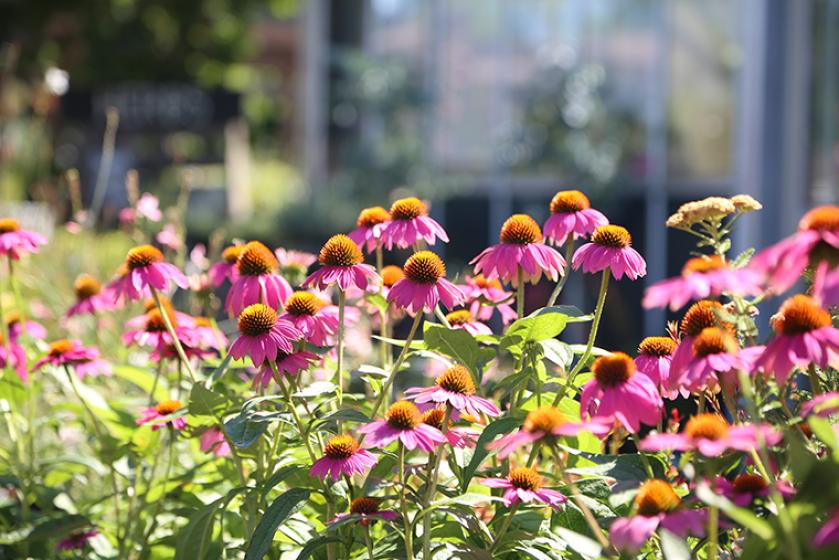Well, summer is officially upon us Hampton Roads! With the days getting longer and temperatures on the rise, your garden needs a little TLC, and summertime is all about garden maintenance! Whether growing fruits and veggies, or maintaining your ornamentals, there’s plenty to do this month. Here's a few simple tips to help you get the most out of your summer landscape:
Water. It’s best to water your garden early in the morning when the temperature is cooler so water will not evaporate. Late afternoon/early evening watering is also okay if the plants have ample time to dry before nightfall. Newly planted trees, shrubs, and perennials with roots close to the soil surface need watering on a daily basi,s since regular watering is essential until new plants become established. Because older plants have established root systems, they should not need to be watered daily. However, even older established plants require regular watering during this time of year. The best way to water in the hot, dry weather is a slow, deep soak. This allows the water to penetrate deeply with very little runoff and encourages deep root systems, which allow plants to better survive periods of drought. Mulching around the base of the plant will also help the water soak in rather run off.
Weed. There is no such thing as a garden without weeds, so take a deep breath and start pulling! Just 10 minutes a day will prevent the roots of weeds from having time to grow big. Pulling weeds is easier when the soil is moist, since you are more likely to get the whole root system and your yanking won't disturb surrounding plants as much either.
Mulch. Mulching helps to reduce the number of weeds that pop up in your garden by depriving them of sunlight. Mulch also reduces water loss from the soil, helps maintain a constant soil temperature, and gives your garden a neat and finished look. A layer about 2 inches thick is ideal in most cases.
Deadhead & Prune. Deadheading flowers encourages plants to produce more buds and also helps to stimulate foliage growth. Deadhead by using your thumb and forefinger to pinch off spent blooms. Be sure to prune any dead or damaged branches on trees and shrubs in the landscape too.
Check for Pests & Disease. Summertime pests such as Japanese beetles, grasshoppers, whiteflies and other intruders view your garden as a tasty buffet, so be sure to stop them in their tracks, or they may get more of your tasty veggies than you do! If you find that you do have a pest or disease problem, it is important to correctly identify the cause so you can choose the right course of action. There are many environmentally friendly pesticides for plant diseases and insect control.
Fertilize. In the middle of summer, your annuals and roses may need to be fertilized. This will help boost their performance and give them the best chance of surviving during the colder months. Potassium will help promote flower growth, but it is wise not to use nitrogen as this will encourage foliage growth which is not required during summer.
Add Color with Annuals. Now that summer is here, many spring-blooming annuals like pansies and violas are beginning to fade. Add some fresh pops of color by replacing these with heat-loving varieties. Angelonia, lantana, ageratum, coleus, pentas, portulaca, salvia, sweet potato vine, and zinnia will grow quickly in warm temperatures and will provide a beautiful burst of color during the dog days of summer.

